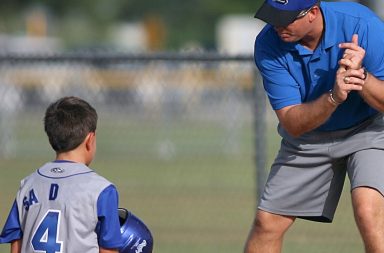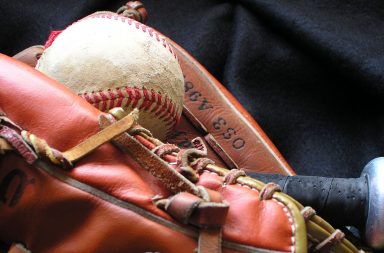So, it’s time for baseball practice. After some good warmups – maybe a short jog, defintiely some throw and catch – you are ready to begin. You line your fielders up in their positions and begin hitting grounders. In order to give some game situational repititions, you go through the infield, having players make outs at first base, then cover second, then play as if the bases are loaded. You hit balls to the outfield, having your fielders practice hitting the cutoff man where appropriate. You hit balls faster and faster. You keep the players moving, you work them hard.
Now, you bring in batters. Maybe you even have them run bases after hitting, to really help with authentic game situations. What a great practice, right?
Right?
Sorry, pal. You are wasting everyone’s time.
You will involve no more than two or three players on any given repitition. Tops. Everyone else will stand around and watch. If you are like one hundred percent of the other youth baseball coaches who run this sort of practice, you will almost certainly hit two to three times as many balls to your infielders, knowing that they will see more action in games. Maybe you’ll even just give up and pull your outfield in to run bases exclusively.
This is not a great practice at all – in fact, you are making baseball into a chore for many of your players. Kids want to play, they don’t want to watch others play. Even your star shortstop is probably bored, waiting for his next grounder.
This is not to say that there is no merit to having your whole team on the field; yes, there is a time and place for doing it this way. However, you will see much more benefit if you run stations.
What the heck are stations, you might ask? Simply put, the idea is that you divide your team into several small groups and have them each focus on a specific skill. One station might consist of a batting tee and a coach to help make sure the player is getting in a nice number of quality swings. Another station might be a coach throwing batting practice. A third could be practice on fielding grounders correctly… and so on.
Have your players do thier station for a set amount of time, then rotate them to the next. In this way, they get many more repitions at that particular skill than they ever would have standing around and waiting for one ball out of twelve.
Following are tips on how to organize your stations:
Come to practice with a plan
Know what you want to achieve ahead of time. You don’t have to plan for weeks in advance, but make sure that you have one before practice begins. A cheap three ring binder is invaluable for organizing practice!
Use your parents wisely
There is no way you can be everyone at once. Use your assistant coaches, and if need be, your parents to run stations. Ideally, you as the head coach will seldom (if ever) run a station – instead, you will roam from station to station, observing and offering pointers to both parents and players.
Tell your coaches/conscripted parents what to do before they begin running their station – during warmups, when kids are throwing to one another, is an ideal time. Don’t expect your parents to know everything about the drill they are running; instead, explain one or two important flaws to look for, and let them concentrate on those. For example, if your parent is t the station teaching the proper way to field ground balls, have them make sure that players sidestep properly, frame up the grounder with their feet, and use both hands in fielding the ball out in front.
Emphasize quality repititions
Instruct the players on what to do at each station before they begin – even if you have qualified assistants, it’s a better use of the time to do your “big” explanation once, not three or four times as each new group rotates in.
Set stations so that each group works for a certain amount of time, not a certain number of repititions. If you focus on reps, players tend to rush and take shortcuts, which lead to bad habits. Make sure your kids hustle between stations, but emphasize the importance of working hard and doing things right at each station.
Make it fun!
Many drills can be done as games. Whenever possible, take advantage of this fact; your players will enjoy them more, work harder, and get more out of practice.


